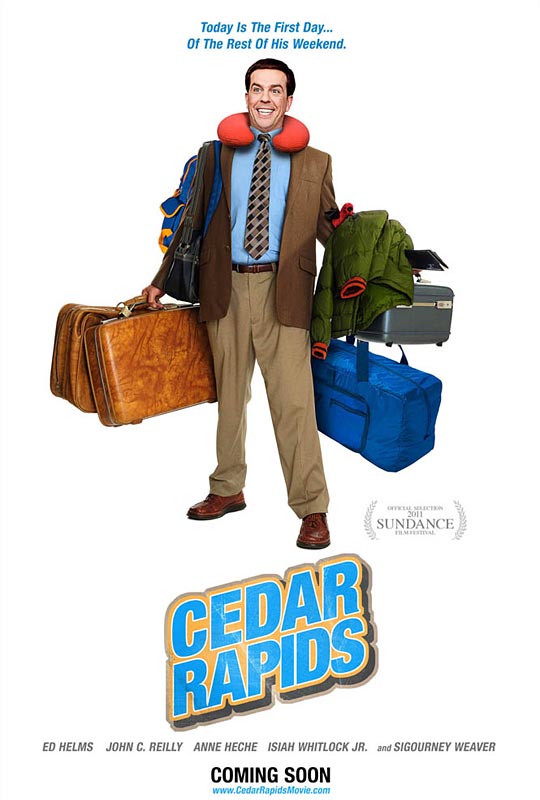Dwight Dekeyser rating: BBB
Dear Friend:
Why did I see this movie?! “Because it was there!” to quote the mountain climber or in this case the canyon creeper. I suppose “canyon climber” would be more respectful, but after you have seen this picture, you will know what I mean. Based on a true story this canyon commando Aron Roylston (James Franco) did more creeping than climbing in this terrible tale of horrendous human suffering. The story was an updated version of Jack London’s To Build a Fire (1902), set in desert Utah instead of snowbound Alaska. This was the classic “man versus nature” theme. (Remember high school English?) Or in this case, man versus rock. The plot can be summarized in two sentences. A solitary young man falls into a canyon crevice and is pinned by a small boulder. After all reasonable attempts have failed to free himself, our hapless hero is compelled to cut off his arm. There! Now there is no reason for you to see this movie – even if, James Franco gave an extraordinary performance. Unless, of course, you think you might enjoy seeing someone suffer for 127 Hours.
This was pretty much a one man show, give or take a view flash backs, hallucinations, and some trained ants. However, this was not exactly “Uncle Milton’s Ant Farm” fun-for-the-whole-family kind of entertainment. Our protagonist was pretty much a desperate bug in a jar trying to climb out for most of the picture. It reminded me of existentialist plays written by Beckett or Sartre with No Exit (1944), out of this hole in the ground. A lot of waiting, wondering, and worrying over the meaning of existence by a helpless hopeless individual caught in circumstances he cannot control or comprehend. (His CapitalOne card was of no help to him under the circumstances.) In other words, this was a production that was not intended to be necessarily sensually pleasurable but intellectually meaningful. It was entertainment that is supposed to be good for you, like a Wagnerian opera you cannot stand or a Shakespearean play you cannot understand.
In addition to the American realism and the French existentialism, I found there was a striking surreal theme to the movie. The desert landscape was a stunning dream-like setting that turned into a nightmare of despair and deprivation in an instant. Roylston was a lonely loner who rode for miles on his mountain bike on solitary sojourns to get to Blue John Canyon. From the flashbacks he experiences, we learn he is unable to accept love and finds his missions through the monastic mountains and canyon crevices an exhilarating escape from the entanglements of human relationships. If I might be allowed to make a Freudian observation, all the squeezing, sliding, and slinking through narrow rock walls was a recreation of the birth canal. (This movie is not for the claustrophobic.) It is only when our hero realizes that “No man is an island,” John Donne (1624), that he realizes the futility of his attempts to return to the womb. He needs other people to survive. When he severed the arm he cut the umbilical cord.
Perhaps the greater challenge of this movie was not how our foolish friend (he told no one where he was going) would escape from the bolder bowels of bedrock, but how the filmmaker, director and writer Danny Boyle was able to maintain an audience’s attention for the entire length of the picture with a single immobile actor stuck in a deep crack? Roylston may have been up Shit’s Creek without a paddle but he did bring his video camera. (He brought his cell phone too but like this credit card it was of no use – alas, no bars.) I told this was an updated tale! When our forlorn fellow was not recording the ecstasy of his agony, he entertained himself by replaying events he had captured prior to his piteous precipitous pitfall. In the end our prodigal Prometheus pried himself from the rock as the deus ex machina or state police helicopter swooped him away to Hollywood immortality. Some people have all the luck!
Here's the trailer: http://www.imdb.com/video/imdb/vi768149785/
From the vault: Harold and Maud (1971), directed by Hal Ashby; starring Ruth Gordon, Bud Cord, and Vivian Pickles. After this crucible of 127 Hours, you could use another kind of inspirational movie. Like an improbable love story? Maud to Harold, “A lot of people enjoy being dead. But they are not dead, really. They're just backing away from life. Reach out. Take a chance. Get hurt even. But play as well as you can. Go team, go! Give me an L. Give me an I. Give me a V. Give me an E. L-I-V-E. LIVE! Otherwise, you got nothing to talk about in the locker room.”
Best of luck in your movie selections. Your faithful friend,
Dwight Dekeyser
© 2011 Dwight Dekeyser, Esq. All rights reserved.






